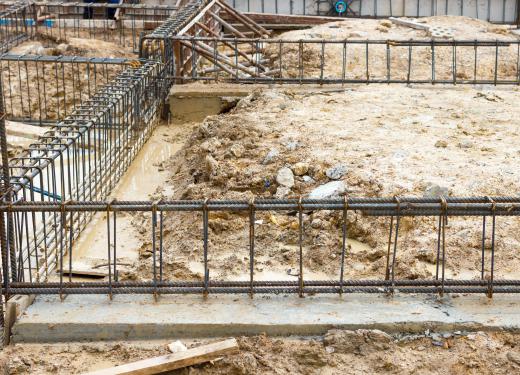Hydro-blasting is an industrial method of using high pressure water streams at up to a level of 40,000 pounds per square inch (PSI), or 2,812 kilograms per square centimeter (kg/cm2), for cleaning and cutting dense materials such as steel and concrete. It is an alternative method to that of abrasive blasting used in sand blasting, and tends to preserve the surface of a material better. The recovery of water used in the process makes it more energy efficient and environmentally friendly. The many uses for high pressure water blasting include in the removal of surface materials such as paint and corrosion-based chemicals, preparing surfaces for bonding in the building trades, and for cutting and shaping materials.
Water blasting is sometimes also used to cut old concrete to aid in its removal in the demolition industry. This particular industry niche in water stream blasting sees significant advantages to the process over the traditional method of breaking up concrete with jackhammers and excavators. Using hydro-blasting reduces the damage to good portions of concrete that are meant to be retained if only part of a building is being demolished by limiting fractures and damage to reinforcing steel rebar. Environmental conditions for workers are also better when hydro-blasting is used, as much less dust and noise are generated during the process. Side effects of the removal of deteriorated concrete also include cleaning exposed rebar that is impacted by the water, as well as creating a rough surface with the retained concrete that makes it more suited to bonding with new replacement concrete that is later poured.

Many companies that provide hydro-blasting services often refer to them as power-washing or pressure-washing services. This is because while hydro-blasting can be used to cut concrete, it will not effectively cut steel, so it is most often used as a preparatory cleaning process prior to painting a structure or otherwise coating it. Using hydro-blasting to clean a surface is done at lower pressure volumes of a maximum of 25,000 PSI (1,758 kg/cm2). In cleaning a steel surface, however, hydro-blasting will clean out fine pits in the steel that slurry or abrasive blasting do not reach. This gives the cleaned steel a decidedly different appearance that may look dull and dirty instead of an overall shiny surface that has been abraded by sand blasting yet left fine pits in the steel uncleaned.
Due to its clean nature, hydro-blasting can be used indoors or outdoors with little need to isolate an area or protect the surroundings while working. Many modern systems that use water blasting also have vacuum recoveries for both the expelled water as well as the surface debris that has been blasted off. Since it is not abrading a surface but merely breaking it down into small particles, hydro-blasting works well at removing a variety of flexible coatings, such as rubber and other semi-soft plastics that naturally resist abrasion.
